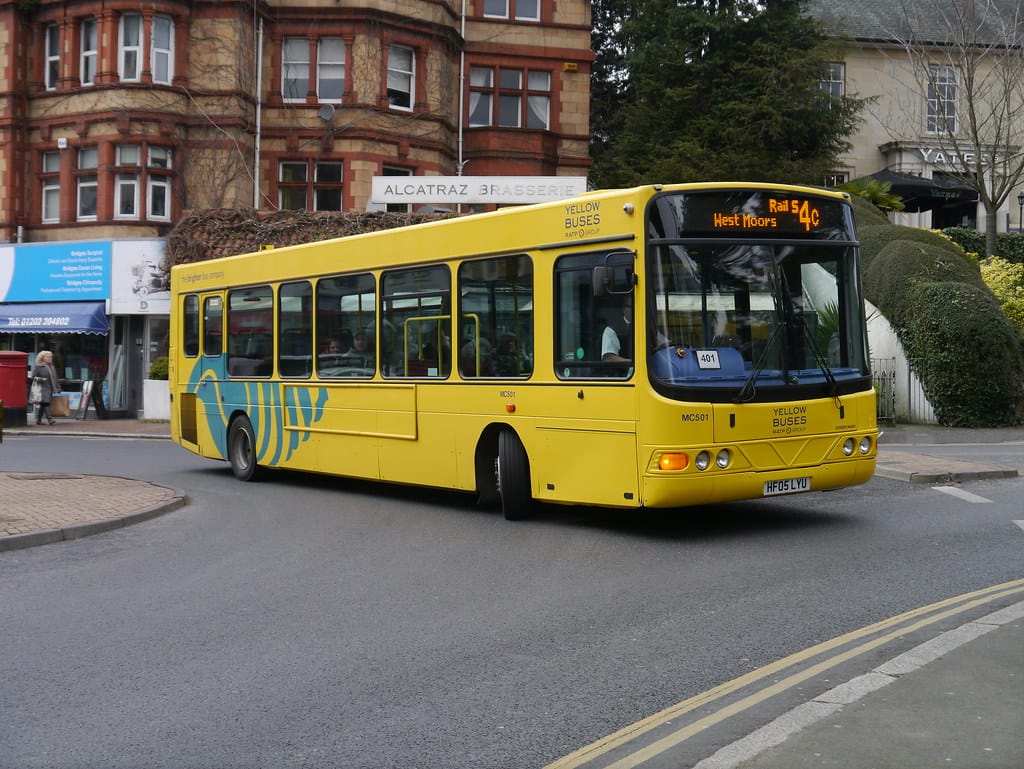Bournemouth’s public transport landscape has undergone a significant transformation over the past century. The iconic yellow buses, a familiar sight for generations, ceased operations in 2022, marking the end of an era. This article delves into the history of Transdev Yellow Buses, from its municipal roots to its eventual demise, exploring the key events, challenges, and the legacy it leaves behind. For those interested in converting units, our guides on 172 pounds en kilos and 77.8 kg to lbs are available.
From Trams to Transdev: A Century of Service
The story of Yellow Buses begins in the early 20th century. In 1902, Bournemouth Corporation introduced electric trams, revolutionizing local transport. However, the trams’ reach was limited, prompting the introduction of bus services in 1906. These early buses acted as feeders to the tram network, transporting passengers from outlying areas like Kinson and Holdenhurst, which expanded in the 1930s, to the main tram lines. This marked the beginning of the bus service’s integral role in connecting Bournemouth’s communities.
The Privatization Era and Transdev’s Arrival
The landscape of public transport in Britain shifted dramatically with the deregulation of bus services under the Transport Act of 1985. This allowed private companies to compete with municipal operators, ultimately paving the way for privatization. In December 2005, Bournemouth Borough Council sold a 90% stake in Bournemouth Transport Limited (Yellow Buses) to Transdev for £15 million, retaining a 10% share. This marked a pivotal moment in Yellow Buses’ history. The company relocated to a new, state-of-the-art £5 million facility on Yeomans Way in early 2006 and enjoyed initial success, earning the ‘Shire Operator of the Year’ award in 2009 and 2010.
Financial Headwinds and Route Restructuring
Despite early promise, Transdev’s Yellow Buses began facing increasing financial pressures. Rising operational costs, coupled with increasing competition, posed significant challenges. In an attempt to adapt, the company implemented route restructuring in 2017 and again in 2018, based on passenger research and reverting to an earlier route numbering format respectively. However, these measures proved insufficient to stem the financial losses. The COVID-19 pandemic, which began in 2020, dealt a further blow to the already struggling company, significantly impacting ridership and exacerbating the existing financial strain.
The End of the Road: Closure and Legacy
The combined pressures of financial difficulties, declining ridership, and the pandemic’s impact ultimately proved insurmountable. In July 2022, Yellow Buses entered administration. Just a month later, on August 4th, operations ceased entirely, bringing an end to a 120-year history of service in Bournemouth. The closure had a significant impact on Bournemouth residents, affecting accessibility and necessitating a search for alternative transportation options. While the yellow buses are gone, their story serves as a poignant example of the challenges facing the public transport sector and the importance of adapting to a constantly evolving landscape.
Deconstructing the Demise: Why Did Yellow Buses Fail?
The closure of Yellow Buses wasn’t a singular event but the culmination of several factors. The COVID-19 pandemic undoubtedly played a crucial role, drastically reducing passenger numbers as lockdowns and restrictions limited travel. This sudden drop in revenue amplified pre-existing financial pressures, making it difficult for the company to cover operational costs. Simultaneously, rising fuel prices added another layer of complexity, increasing expenses while revenue streams dwindled. The aging fleet, requiring increasing maintenance and repairs, further strained the company’s budget. While restructuring efforts were made, they ultimately proved insufficient to address the fundamental challenges facing the company. Some experts suggest that broader trends in the public transport sector, such as changing travel patterns and increased competition from private vehicles, may have also contributed to the company’s downfall.
Filling the Void: Who Replaced Yellow Buses?
In the wake of Yellow Buses’ closure, Morebus quickly stepped in, taking over the majority of the routes within 48 hours. This rapid response mitigated the disruption to Bournemouth’s public transport network and ensured continued service for residents. Other operators, like Hants & Dorset Buses, may also expand their services in the area. The Bournemouth, Christchurch, and Poole (BCP) Council now plays a central role in shaping the future of local public transport, overseeing contracts, setting regulations, and ensuring accessible and affordable services for the community. The demand for reliable public transport in Bournemouth, evidenced by Morebus’ swift takeover, highlights the essential nature of these services and suggests a promising future for the sector.
Mapping the Network: Where Did Yellow Buses Operate?
The familiar yellow buses primarily served Bournemouth, Poole, and Christchurch, connecting these towns and facilitating movement within the region. Under Transdev’s ownership, from 2005 to 2022, these buses became a recognizable symbol of local transport. However, the company’s financial difficulties, declining ridership, increasing fuel costs, and the challenges of maintaining an aging fleet ultimately led to its closure. Morebus’ subsequent acquisition of the majority of Yellow Buses’ routes ensured continued service for these communities, albeit under new management. The Bournemouth, Christchurch and Poole Council is now tasked with planning the future of public transport in these areas, likely considering various factors such as community needs, financial sustainability, and potential technological advancements.
Looking Ahead: The Future of Bournemouth’s Public Transport
The story of Yellow Buses offers valuable lessons for the public transport sector. It underscores the need for adaptability, financial resilience, and a proactive approach to evolving challenges. The future of Bournemouth’s transport network will likely involve innovative solutions and integrated approaches, combining various modes of transport such as buses, bikes, and trains. Some experts believe that the future might include electric or even self-driving buses and on-demand ride-sharing services. While uncertainty remains, the BCP Council’s ongoing efforts and the clear demand for public transport suggest a dynamic and evolving landscape for the future.















